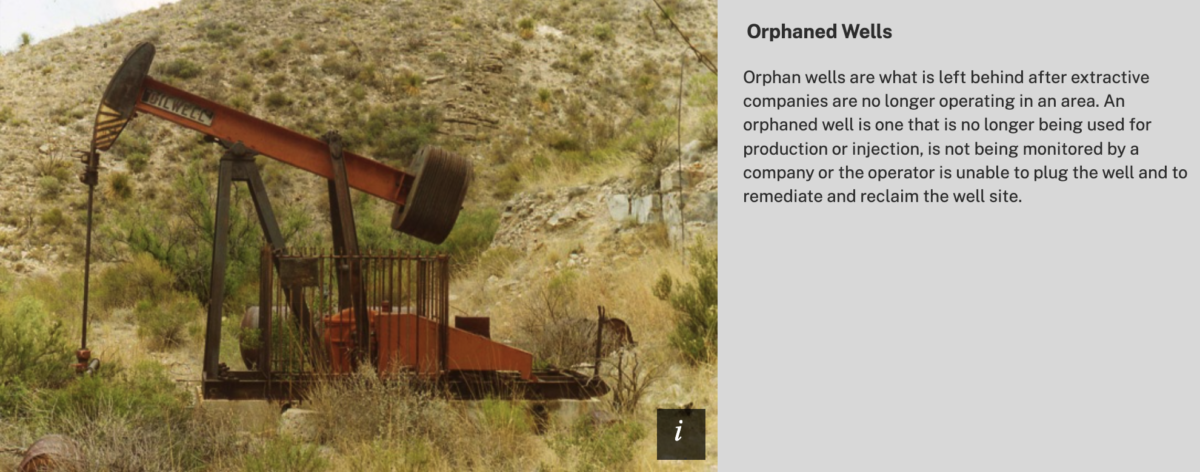About $10 million committed to 17 project sites –
Staff Report –
WASHINGTON, D.C. — New federal spending of $10 million from President Biden’s Bipartisan Infrastructure Bill will go to fund 17 projects to address legacy pollution and conserve ecosystems around the country, according to an announcement on Wednesday from the Department of the Interior, just part of a $68 million investment announced earlier this year.
“President Biden’s Bipartisan Infrastructure Law is the largest investment in cleaning up legacy pollution in American history,” said Secretary Deb Haaland. “At the Department of the Interior, we are using every tool at our disposal to support multiple programs to clean up these legacy environmental hazards, advance environmental justice, support good paying jobs, and safeguard our lands for future generations.”
The announcement comes during the Interior Department’s “Legacy Pollution Week,” an opportunity to honor the work that has been done, and the opportunities ahead. Millions of Americans nationwide live within just one mile of an abandoned coal mine or orphaned oil and gas well.
The announcement is in addition to $1.15 billion in fiscal year 2022 funding that will be allocated to states to clean up orphan oil and gas wells and $725 million to be allocated to states to clean up abandoned mine lands.
In addition, the U.S. Geological Survey will use a $600,000 investment to develop the National Geospatial Decision Tool for Science-based Restoration of Mined Land, a tool for use by managers and decision-makers to assess defined mine lands for potential hazards and risks to vulnerable communities, and to prioritize and track remediation, revegetation and restoration activities.
The project will unite national data in an online, accessible and query-able geospatial application driven by Interior Department stakeholder needs that can readily and transparently evaluate and prioritize remediation sites, consider the impacts of climate change, and monitor effectiveness of projects, with a proof of concept focused on the Colorado River Basin.
These investments will also help support the “America the Beautiful” initiative to conserve, connect and restore our nation’s lands, waters and wildlife.
Projects Awarded
Alaska
Southeast Fairbanks, the Yukon-Tanana Uplands Ecoregion Restoration project ($1,000,000)
The Yukon-Tanana Uplands Ecoregion Restoration project includes the design and construction of a stream restoration of an area that was placer mined. The project area is considered a “Healthy Lands Focal Area.”
California
San Bernadino County, the Red Mountain Wash Restoration project ($1,500,000)
The Red Mountain Wash Restoration project will involve watershed scale revegetation and restoration to remedy the detrimental effects from historic hard rock mining operations. This project is a partnership between the Bureau of Land Management (BLM) and the Fish and Wildlife Service (FWS) and contributes to the Desert Renewable Energy Conservation Plan.
Tehama County, the Payne’s Creek Riparian Restoration ($100,000)
The Payne’s Creek Riparian Restoration project will construct approximately 5 miles of riparian fencing to control livestock grazing and protect habitat for ESA listed fishes. This project is a partnership between the BLM, Bureau of Indian Affairs (BIA), Tehama Resource Conservation District, and the Pit River Tribe.
Colorado
Hinsdale County, the Palmetto Gulch Restoration project will Restoration of Palmetto Gulch ($300,000)
The Palmetto Gulch Restoration project will restore Palmetto Gulch in the Upper Lake Fork of the Gunnison River. The project will remove mine tailings from streambeds downstream of remediated mined sites, contour and restore streambeds and ensure stability for climate resiliency, re-seed with native seed, and plant with native willows. This project is a partnership between the BLM and Colorado Department of Reclamation and Mine Safety and contributes to the BLM Gunnison Resource Management Plan.
San Juan County, the Animas Forks project ($160,000)
The Animas Forks project will restore streambanks and wetlands negatively impacted by upstream mining. This project contributes to the BLM Tres Rios Field Office Resource Management Plan.
Kentucky
Oneida, the Blair Creek Restoration Design project ($150,000)
The Blair Creek Restoration Design project in Big South Fork National River and Recreation Area will conduct remedial design for the site, which includes development of engineering drawings and specifications for a site cleanup.
Oneida, the Laurel Branch Stream Spoils Restoration Design project ($150,000)
The Laurel Branch Stream Spoils project at Big South Fork National River and Recreation Area will develop a remedial design, including the development of engineering drawings and specifications for a site cleanup.
Nevada
Lincoln County, Caselton Mine & Mill and Impacted Watersheds Restoration ($1,700,000)
The Caselton Mine & Mill and Impacted Watersheds Restoration project will focus on three washes the have been impacted by historic mining in Caselton. Restoration will ensure these washes are not only made whole but made resilient. This project is a partnership between the BLM, Nevada Department of Environmental Protection and the Nature Conservancy.
Humboldt County, the Riparian Fencing project ($450,000)
The Riparian Fencing project in Humboldt County will repair or reconstruct approximately 40 miles of riparian fencing as part of a larger effort to restore degraded streams critical to the Lahontan cutthroat trout. This project is a partnership between the BLM, FWS, Nevada Department of Wildlife, and Nevada Division of Forestry.
New Mexico
Luna and Santa Fe Counties, the Restoration of Cooke’s Peak, Fluorite Ridge and New Placers Watersheds project ($300,000)
The Restoration of Cooke’s Peak, Fluorite Ridge and New Placers Watersheds project will restore and revegetate three watersheds that are heavily impacted by historic mining and milling operations. Removal of invasive weeds and non-native vegetation, re-contouring incised streambeds, mitigating mine tailings and planting native seed and plants to encourage habitat restoration, native species revival, and climate resilience. This project is a partnership between the BLM and New Mexico Mining and Minerals Division.
Oregon
Grant County, the North Fork John Day Riparian Fence Maintenance project ($198,000)
The North Fork John Day Riparian Fence Maintenance project will repair or reconstruct approximately 18 miles of riparian fencing to control unauthorized livestock grazing. This project is a partnership between the BLM and North Fork John Day Watershed Council.
Pennsylvania
Farmington, the Develop Site Condition Assessment for Ice Pond Run project ($20,000)
The Develop Site Condition Assessment for Ice Pond Run project at Friendship Hill National Historic Site will evaluate site conditions to determine if further action is warranted under the process set forth in the Comprehensive Environmental Response, Compensation, and Liability Act.
Texas
Big Bend, the Mariscal Mine project ($20,000)
The Mariscal Mine (Site) was a mercury mine and mill operated from approximately 1900 until 1943 before becoming incorporated into Big Bend National Park. The site encompasses approximately 92 acres with mine workings and wastes deposited on the ground. Physical hazards include at least two adits and 18 shafts, and the ruins of the Site facilities. Studies performed by the U.S. Geological Survey during the mid-2000s in and around mercury mines in the Big Bend region, including Mariscal Mine, confirmed elevated mercury in soils, sediments, mine wastes, water, and air in and around the mine sites. This project will search for evidence to determine liability for contamination by matching wastes found at the site with parties that may have contributed wastes to the site, and/or identify persons responsible for the release of hazardous wastes at the site.
Utah
Rich County, the Rich County Riparian Grazing Enclosure project ($40,000)
The Rich County Riparian Grazing Enclosure project will repair and/or reconstruct approximately 27 miles of riparian fencing as part of a larger effort to restore degraded streams critical to Bonneville cutthroat trout. This project is a partnership between the BLM, Utah Division of Wildlife Resources, Trout Unlimited, Working Lands Conservation, and the Utah Grazing Improvements Program.
Abandoned Mine Land Clean Up
Counties: Soldotna, Alaska; Yuma and LaPaz Counties, Arizona; San Diego, California; Clark and Lincoln Counties, Nevada; Comanche County, Oklahoma ($1,000,000)
This project will mitigate physical safety and environmental hazards at mined FWS lands. Actions will include assessment of physical safety hazards, mitigation of safety hazards, and assessment of environmental contamination.
Counties: Yavapai AZ; San Bernardino, Amador and Colusa CA; Hinsdale and Garfield CO; Madison MT; McKinley and Sandoval NM; Crook and Baker OR ($1,944,900)
This project will provide restoration and vegetation management of multiple historic mined land repository areas in the western United States containing waste rock and tailings on BLM-managed land and surrounding associated watershed areas.
For more information about investments the Department of the Interior is making through the Bipartisan Infrastructure Law to clean up legacy pollution, visit the Department’s Legacy Pollution website.
___
If you support truth in reporting with no paywall, and fearless writing with no popup ads or sponsored content, consider making a contribution today with GoFundMe or Patreon or PayPal.















Abandoned resources extraction sites should have the heir companies pay for the restoration. There’s millionaires walking away from the messes. All new permits should hold enough money from the profits in escrow for the restoration of the areas involved.